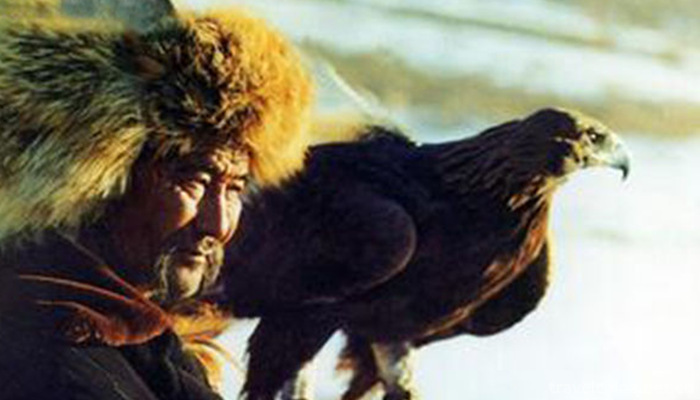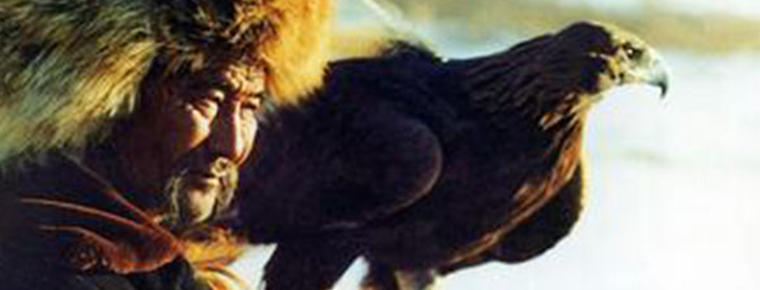Kazakh Aytes
Kazakh Aytes
Kazakh Aytes is a typical representative of Kazakh folk art, a competitive form of performance, is the most abundant content of Kazakh folk oral literature, the most influential literary type among the masses.
Its traditional programs mainly show the history, culture and feelings of the Kazakh people. From lyrics to music, they are full of strong oral literature and music culture characteristics of Kazakhstan. They have outstanding historical and cultural values. They are known as a "mirror" and "encyclopedia" which comprehensively reflect the social life of the Kazakh people and can be called the artistic treasures of the Kazakh people.
On May 20, 2006, "Kazakh Aytes" declared by Yili Kazakh Autonomous Prefecture of Xinjiang Uygur Autonomous Region was listed in the first batch of national intangible cultural heritage list with the approval of the State Council.
historical origin
Aytes has a long history, a far-reaching foundation, a wide range of social influence, strong color of the masses, distinctive national characteristics and other characteristics, but also has a strong vitality of the poetry form.
In ancient times, Aytes sometimes held large-scale festival rallies, and sometimes at ordinary wedding occasions, the Aykens sought each other's rivals for singing competitions and skills. In ancient times, there were no schools to impart knowledge, nor auditoriums to gather people, let alone radio, television, newspapers and magazines used by people since the 21st century. In addition, the Kazakh people basically live a nomadic life and live scattered. At that time, Akan and poets, who had profound knowledge, made full use of people's opportunities to attend weddings and other gatherings. By asking each other questions in the form of singing, they improvised their answers in poetry, and by this way, they imparted knowledge or expressed some opinions to people.
In history, the Kazakh people lived by water and grass and lived scattered, so it was very difficult to bring the people together. In this case, the use of wedding, Festival gatherings, anniversary ceremonies and other places where people gather to hold Akan's singing, popular with the public, and easy to accept and remember, people even after the breakup of each other's singing. While hosting guests, the host gathers the neighbors and lets the guests sing. At this time, the guests will sing the knowledge and poems they hear and recite to the people. In this way, his playing and singing will soon be sung throughout Awule. In this way, it will spread ten times and one hundred times, and soon it will spread all over the world. In the second half of the eighteenth century, knowledge playing and singing was widely spread among the people and began to play a propaganda role. In ancient times, life knowledge such as customs, etiquette greetings and Islamic teachings and precepts were propagated and disseminated through such playing and singing. Most of the most influential and high-level Aytes known in history were in the late 19th and early 20th centuries. In the process of folk collection of traditional cultural heritage, several types and forms of knowledge playing and singing have been collected. For example, "Brooks Girl and Ye Lintai's Chorus", the competition between them was about 1900. Their repertoire was widely disseminated in Ermin and Torry counties. Their heirs, Baishanhali and Shadehan, have collected their complete records.
artistic characteristics
type
Aytes'knowledge of playing and singing has continued from history to the present. In ancient times, Aytes included Bastawu Poetry (opening performance), Oman Playing and Singing (greeting poem), Praise Playing and Singing, Mountain Playing and Singing, Four Seasons Playing and Singing, Admonition Playing and Singing, Yejik Playing and Singing, Joking Playing and Singing, Fish Playing and Singing, Deliberation Playing and Singing, Knowledge Playing and Singing, Riddling Playing and Singing, etc. Class.
form
Unfixed aria and improvisation
Aytes'duet has no fixed music board or corresponding singing tune. The singer usually generates melody and rhythm from the language itself according to the content of the duet, and plays Winter Bra as his accompaniment. There are also unaccompanied solo songs without Winter Bra's accompaniment.
The lyrics of Aytes are improvised and not fixed, so the artist, Akan, is highly demanded. Aytes artists must have agile thinking and profound knowledge, export-oriented talent, insight into the world, good human relations, and be able to respond in an instant in order to convince people. It is not only the embodiment of Akan's ability to play and sing or a single musical ability, but also a comprehensive skill. It is a very complex and advanced comprehensive art that integrates the skills of improvisation, music talent, eloquence, creation, performance and so on.
Competitive style
Because of the competitive duet singing, Aytes artists usually adopt the way of self-promotion and restraint in their performance, trying to win first, with sharp language and mutual understanding, win without arrogance, lose without discouragement, win with modesty and courtesy, and lose without shame. Aytes'performances must be held in crowds, usually between artists from different tribes and regions.
Its poems and sentences are graceful, the language melody is beautiful, the characteristic is distinct, has the very strong attraction. Its forms are flexible and diverse. It is not only a form of entertainment performance, but also can spread knowledge to the people, arouse the people, stimulate their fighting spirit and master knowledge. This form of education is popular among the public, and is well received by the public.
Inheritance and protection
Aytes has a long history, profound foundation and wide social influence. It is also very popular in Kazakh countries and regions, such as Kazakhstan, Mongolia, Turkey and Uzbekistan. For example, our country's Akan won the first place in 1992 when singing with the Akans of Kazakhstan. He was unanimously praised when he came to Turkey in 1993 for a singing competition.
As a form of Aytes, knowledge playing and singing were widely used in ancient times. Especially after the spread of Islam and European new civilization to the Kazakh grassland, in order to disseminate new knowledge, doctrine and doctrine, the Akans, after learning relevant knowledge, played and sang in the form of mutual questions and answers when the people gathered. However, in Aytes after 2000, there are fewer and fewer types of common-sense singing such as "Knowledge Playing and Singing", "Riddle-guessing Playing and Singing", "Fish Playing and Singing". They are on the verge of being lost.
With the development of market economy and the diversification of cultural life, people's aesthetic needs have begun to change dramatically. The younger generation of Kazakhs is becoming more and more indifferent to Aytes. This ancient traditional art is facing the danger of extinction. It is very necessary and urgent to rescue and master this declining and even endangered form of Aytes, and to make the past serve the present and carry forward it.
The state attaches great importance to the protection of intangible cultural heritage. On May 20, 2006, the opera was approved by the State Council and listed in the first batch of national intangible cultural heritage list.


-
1.Buluotuo
Buluotuo, the traditional folk literature of Ganzhuang Mountain in Baise, Guangxi, China, is one of the national intangible cultural heritages.
Time 2018-12-15 -
2.China Coal Museum
The China Coal Museum is located at the intersection of Yingze Street and Jinci Road in Taiyuan City. It was completed and opened on September 30, 1989
Time 2018-12-22 -
3.Guilin Yijiang Margin Scenic Spot
Guilin Yijiang Rim Scenic Spot is situated on the northwest tour line of Guilin with long corridor. It is 32 kilometers away from the urban area (321 National Highway Lingui Wutong Town Section).
Time 2019-01-13 -
4.Kuqa Wangfu Scenic Area
Located in Kuqa County, Xinjiang, the "Kuqa Wangfu" was built by Emperor Qianlong of Qing Dynasty in 1759 by dispatching Han craftsmen from the mainland in order to commend the local Uygur l
Time 2019-01-29 -
5.Longsheng Hot Spring Resort
Longsheng Hot Spring is located 32 kilometers northeast of Longsheng County. It takes 40 minutes to get to Longsheng Hot Spring by bus from the county town. Hot springs are gushed from rock strata 120
Time 2019-02-06 -
6.Pingle Ancient Town
Pingle Ancient Town, located 93 kilometers southwest of Chengdu and 18 kilometers southwest of Qionglai City, is a famous historical and cultural town in China.
Time 2019-02-07 -
7.Diabolo
Diabolo is a splendid flower in Chinese traditional culture garden. Diabolo used to be called "Hu Dao", also known as "ground bell", "empty bell", "wind gourd".
Time 2019-04-28 -
8.Drum bowl song
Drum-pot song is a very ancient traditional form of music and art in Hubei Province of China. It originates from the traditional folk activities of "beating a pot as a drum, singing with the fune
Time 2019-05-01 -
9.Roast duck skills
Quanjude hanging oven roast duck is a local traditional handicraft in Beijing. Quanjude Roast Duck Restaurant, a well-known old Chinese brand in Beijing, was founded in 1864 by Yang Quanren.
Time 2019-05-08 -
10.Lei opera
Lei Opera, formerly known as the Grand Opera Class, was once known as "Leizhou Opera" because of its early tune of Leizhou songs. It is one of the national intangible cultural heritage of Le
Time 2019-05-11 -
11.Salar Wedding
Salar wedding ceremony is one of the most important ceremonial activities in Salar people's life etiquette. Salar traditional wedding ceremony is held in the midwinter of each year. From engagement to
Time 2019-06-11 -
12.Left Foot Dance of Yi Nationality
The left foot dance of the Yi people, which is called "Gouzha" in the Yi language, falls to the left foot. Dao Guangnian's Dingyuan County Chronicle says, "It's called falling on the le
Time 2019-07-13